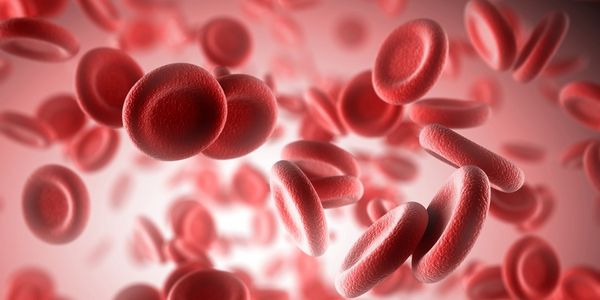Hemolytic anemia-treatment. Symptoms and prevention of the disease hemolytic anemia

Hemolytic anemia is a modular concept, includes a variety of Pathology, a common symptom of which is increased destruction of red blood cells in the bloodstream, that leads, in turn, to the development of anemia, bilirubinemii and strengthen eritropoaiza. Among all the diseases of blood hemolytic anemia make up a little more 5%, among all anemias- 11,5%.
Hemolytic anemia-causes
Among the hereditary causes include: congenital jeritropojeticheskaja Porphyria, hereditary sferocitoz, jelliptocitoz, deficiency of CH-6-dehydrogenase, Thalassemia, serpovidnokletochnaya anemia, carrier stable abnormal Hb, etc. Among the acquired causes include:
- gipofosfatemiя;
- the transfusion of incompatible blood, vaccination;
- infectious diseases (malaria, syphilis, Bartonellabacilliformis, Clostridiumperfringens, etc.);
- some medicines (phenacetin, phenylhydrazine, acetanilid, antimalarial drugs, sulfonamides and antipyretics, deficit-6-FD, paraaminosalicilovaya acid, quinine, etc.);
- some chemical substances (lead, nitrobenzene, etc.);
- biological effects (Spider bites, some snakes);
- mechanical factors (eg, artificial heart valves, March hemoglobinuria, etc.);
- burns;
- hemolysis when exposed to cold agglutinins;
- unclear etiology (eg, with idiopathic paroxysmal nocturnal gemoglobinurii).
Hemolytic anemia-symptoms
Regardless of the etiology of hemolysis, in the development of hemolytic anemia can be divided into three stages (hemolytic crisis, subcompensation hemolysis and remission). Haemolytic crisis characterized by the clinical manifestations of the anaemic syndrome and syndrome of bilirubin intoxication. When bilirubin intoxication appear nausea, vomiting, ikterichnost' skin and mucous membranes (especially skler), dizziness, headache, stomach ache, fever, and sometimes convulsions, disorders of consciousness. For the anaemic syndrome is characterized by weakness, dizziness, breathlessness, paleness of the skin and mucous membranes, tachycardia, expanding the boundaries of the heart, gluhost' heart tones, systolic murmur at the apex. Gradually increases the liver and spleen.
Hemolytic anemia-Diagnostics
In the diagnosis of hemolytic anemias apply general blood test (detects anemia and changes the size and shape of red blood cells), biochemical blood analysis (including serum bilirubin, ALT, LDH), serum haptoglobin, urine hemoglobin and hemosiderin. To confirm the diagnosis can use bone marrow puncture (in the biopsy identifies active processes erythropoiesis).
The most characteristic for an intravascular hemolysis is active sferocitoz erythrocytes (in transfusion reactions, ancestral sferocitoze, When heat antibody hemolytic anemia). May also be shistocitoz (When intravaskuljarnom prosthetics, mikroangiopatiah), sickle-shaped red blood cells (when sickle-cell anemia), mishenevidnye erythrocytes (in liver pathologies, gemoglobinopatiâh), jadrosoderzhashhie erythrocytes and basophilia (high beta-tallasemii). Taurus Gejnca are detected when an unstable hemoglobin, Activation peroxide oxidation, akantocity-with anemia with shporovidnymi cell, aggljutinirovannye cells with cold agglutinin disease.
Hemolytic anemia-types of the disease
Congenital (hereditary) forms of hemolytic anemia can be divided into:
- gemoglobinopatii (quality-sickle cell anemia, Thalassemia);
- jenzimopenicheskie (deficiency of the enzymes of Glycolysis, pentozo-phosphate series, enzymes, involved in the use of ATF, education, oxidation and restoration of glutathione, in the synthesis of porphyrins);
- membranopatii erythrocytes (ovalocitarnaja, mikrosferocitarnaja, akantocitarnaja).
Acquired forms of hemolytic anemias are classified in:
- acquired membranopatii (shporokletochnaja anemia, paroxysmal nocturnal hemoglobinuria);
- immunogemoliticheskie anemia (izoimmunnye, Autoimmune);
- toxic (with some drugs and Poisons);
- associated with mechanical damage to red blood cells (heart valve prosthesis, March hemoglobinuria, mikroangiopaticheskaja hemolytic anemia, or illness Mashkovich).
Other hemolytic anemia-idiopathic (in half the cases), secondary (lymphomas) anemia, hemolytic jaundice of newborn.
Hemolytic anemia-actions of the patient
If you suspect the presence of anemia are referred to a specialist.
Hemolytic anemia-treatment
For the treatment of hemolytic anemias glukokorticosteroida used, immunosuppressants, transfusion of washed red blood cells, piracetam (in the complex therapy), they can also conduct splenjektomiju (removal of the spleen).
Hemolytic anemia-Complications
- DIC;
- anemicheskij shock (acute cardiovascular insufficiency);
- aregeneratornyj Kriz;
- acute renal failure;
- hemosiderosis internals;
- podkapsul'nye breaks, infarction of spleen, hypersplenism;
- dyskinesia of the biliary tract.
Haemolytic anaemia-prevention
The only possible way to prevent the development of anemia is maintaining a healthy lifestyle, timely treatment and prevention of other diseases.
